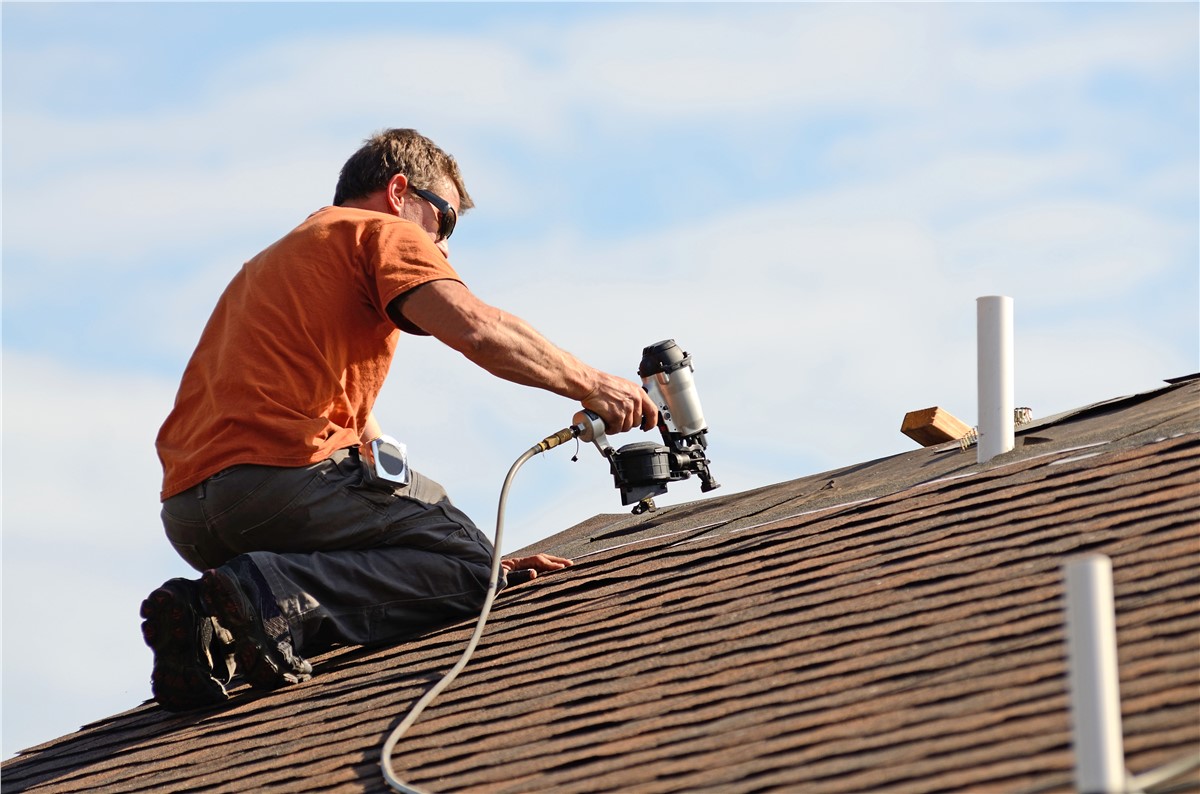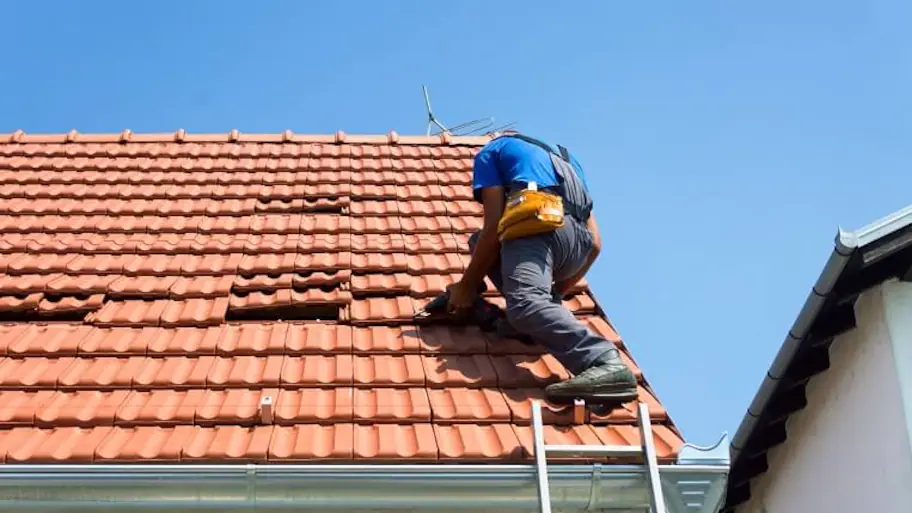Roof Repair Oahu: Quick and Affordable Roof Repairs Near You
Roof Repair Oahu: Quick and Affordable Roof Repairs Near You
Blog Article
Comprehending the Different Kinds of Roofing Systems: A Comprehensive Overview for Homeowners
With a variety of alternatives-- ranging from the standard gable to the contemporary flat-- each kind provides special advantages and obstacles that need to straighten with the house owner's particular demands and environmental factors to consider. As we explore the intricacies of various roof kinds, it becomes apparent that one size does not fit all; the right choice might shock you.
Gable Roofing Systems
Saddleback roofs, identified by their triangular form, are amongst the most prominent roof designs because of their simplicity and efficiency in losing water and snow. This layout features 2 sloping sides that fulfill at a ridge, enabling for reliable drainage and reducing the risk of water buildup. The high pitch generally related to gable roof coverings enhances their ability to take care of heavy precipitation, making them suitable for different climates.
In addition to their practical advantages, gable roof coverings offer aesthetic flexibility. They can be adapted to numerous architectural designs, from typical to modern-day homes. The layout can additionally suit additional features such as dormer home windows, which boost natural light and ventilation in the attic room.
Moreover, gable roofings supply sufficient space for insulation, contributing to power effectiveness. House owners can select from a variety of roofing materials, including asphalt roof shingles, metal, and floor tiles, additionally improving personalization alternatives.
Despite their advantages, saddleback roofs may need additional assistance in locations vulnerable to high winds or hefty snowfall. Generally, the gable roof covering continues to be a popular option as a result of its blend of functionality, toughness, and aesthetic allure.
Apartment Roofs
Flat roofs are frequently acknowledged for their minimal style and useful applications, especially in business and commercial setups (oahu roofing). These roofing systems feature a nearly horizontal or horizontal surface area, which allows for easy building and construction and functional area usage. While they might lack the aesthetic appeal of pitched roof coverings, level roofing systems offer countless benefits, specifically in city environments where maximizing room is important
One of the main advantages of flat roofing systems is their availability. House owners can make use of the roofing system room for different functions, such as roof gardens, balconies, or solar panel installments. Additionally, level roofings are generally much more economical to mount and preserve compared to their sloped equivalents, as they need fewer products and labor.
Typical materials used for level roofs include built-up roof covering (BUR), modified bitumen, and single-ply membrane layers, each offering unique benefits. Generally, flat roof coverings serve as a practical and adaptable selection for many homeowners and services alike.
Hip Roof Coverings
Hip roofing systems are defined by their sloped sides that assemble at the top, developing a ridge. This layout is unique from saddleback roofs, as all 4 sides of a hip roofing incline downwards towards the walls, offering a much more secure structure. The angle of the slopes can differ, enabling convenience in architectural aesthetic appeals and capability.
Among the key advantages of hip roofing systems is their capacity to hold up against hefty winds and adverse weather problems. The sloped surfaces enable much better water drainage, decreasing the threat of leakages and this content water damages. Furthermore, hip roofs use increased attic room area, which can be used for storage or perhaps exchanged habitable areas.
However, building a hip roof covering can be extra pricey and complex than easier roofing system types, such as gable roofing systems. The extra material and labor entailed in developing the inclines and making certain correct structural stability can cause greater official website costs. Regardless of these drawbacks, numerous homeowners favor hip roofings for their longevity, aesthetic charm, and potential for power effectiveness.
Mansard Roof Coverings
Mansard roofs, often identified by their one-of-a-kind four-sided design, attribute 2 inclines on each side, with the reduced incline being steeper than the top. This building design, originating from France in the 17th century, is not only aesthetically enticing however useful, as it optimizes the useful space in the top floorings of a structure. The high reduced slope permits for even more clearance, making it an excellent option for lofts or attics, which can be transformed right into living rooms.
Mansard roofings are defined by their flexibility, fitting numerous architectural designs, from traditional to modern. They can be constructed with various products, including asphalt shingles, slate, or metal, supplying property owners with a series of choices to suit their choices and spending plans. Furthermore, the layout permits for the integration of dormer windows, improving all-natural light and air flow in the top levels.
Nonetheless, it is crucial to take into consideration the potential downsides. Mansard roofs may need even more upkeep due to the intricacy of their layout, and their steep slopes can be challenging for snow and rainfall drainage. On the whole, mansard roofings combine elegance with usefulness, making them a prominent choice amongst house owners looking for distinctive architectural attributes.
Lost Roof Coverings
As house owners significantly seek simplicity and functionality in their architectural styles, shed roofing systems have actually become a prominent selection. Defined by a solitary sloping airplane, a shed roofing provides a minimalist visual that enhances numerous home styles, from contemporary to rustic.
Among the primary benefits of a shed roof covering his explanation is its simple building and construction, which usually equates to reduce labor and product costs. This design allows for efficient water drainage, reducing the risk of leakages and water damage. Additionally, the vertical slope gives sufficient space for skylights, boosting natural light within the inside.
Lost roofings also provide convenience in regards to use. They can be properly integrated into enhancements, garages, or exterior frameworks like pavilions and sheds. Moreover, this roof covering design can accommodate different roof products, consisting of steel, asphalt tiles, or also green roofing systems, lining up with eco-friendly efforts.
Nevertheless, it is necessary to consider regional environment problems, as hefty snow lots might demand changes to the roof covering's angle or framework. Generally, lost roof coverings offer a functional and cosmetically pleasing option for homeowners looking to take full advantage of performance without compromising style.
Verdict


Gable roofing systems, identified by their triangular shape, are among the most preferred roofing styles due to their simpleness and effectiveness in dropping water and snow. oahu roofing. The high pitch commonly connected with gable roof coverings enhances their capability to manage hefty precipitation, making them suitable for different environments
While they might lack the aesthetic charm of pitched roofings, level roofs provide many benefits, especially in urban atmospheres where maximizing area is vital.

Report this page